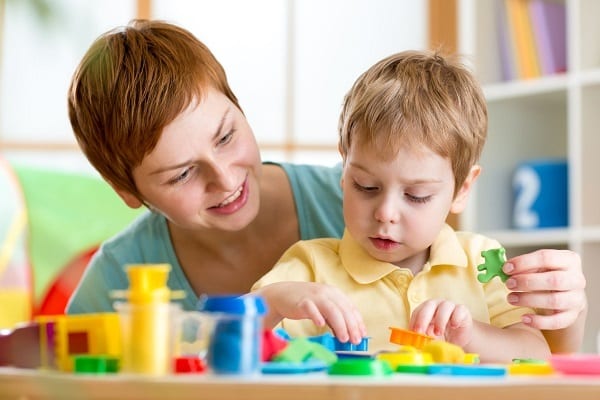How Can Applied Behavior Analysis Help My Child?
 While all children have meltdowns, these behaviors can be frustrating and exhausting for both parents and children. Meltdowns can be even more challenging for children with Autism Spectrum Disorder, who may not have the skills to navigate their own emotional state and abilities to functionally communicate to others. Not all meltdowns can be foreseen ahead of time and ABA cannot prevent ALL meltdowns from happening. What ABA can do is provide your child with the necessary skills to help them better communicate their wants and needs, express their emotional state, and engage in self-coping skills to reduce the challenges that come with behavioral meltdowns. ABA can help reduce these challenging behaviors by providing your child with the necessary communication and coping skills to help prevent further meltdowns in the future.
While all children have meltdowns, these behaviors can be frustrating and exhausting for both parents and children. Meltdowns can be even more challenging for children with Autism Spectrum Disorder, who may not have the skills to navigate their own emotional state and abilities to functionally communicate to others. Not all meltdowns can be foreseen ahead of time and ABA cannot prevent ALL meltdowns from happening. What ABA can do is provide your child with the necessary skills to help them better communicate their wants and needs, express their emotional state, and engage in self-coping skills to reduce the challenges that come with behavioral meltdowns. ABA can help reduce these challenging behaviors by providing your child with the necessary communication and coping skills to help prevent further meltdowns in the future.
Communication is one of the important pieces when it comes to managing meltdowns. If your child is not able to communicate what he wants this just adds to their frustration. For example, if your child is hungry and wants to eat an apple but cannot communicate that an apple is what he wants, he may start to engage in meltdown like behaviors. This meltdown is occurring because your child may not have the skills to communicate “I want apple” and is standing in front of the refrigerator possibly beginning to scream. Further frustration can occur if mom or dad give him, for example grapes, and he cannot express “I don’t want grapes, I want an apple.” This level of frustration just grows and grows until it blows up into a complete meltdown of challenging behaviors. That’s when ABA can help.
ABA uses different research based strategies and techniques to work with your child to teach the word “apple.” This can be a verbal response or using a picture exchange system so that your child can see the picture of an apple and give the picture to another person indicating “I want apple.” This level of communication is now an easier, less stressful means of communication. Functional communication helps reduce the instances of meltdowns occurring in the future, all while increasing your child’s level of communication. Using immediate and consistent feedback such as reinforcing the behaviors we want to see, is just as important as teaching communication. If I say “apple” and I get an apple right away is a lot easier than a 30 minute meltdown in which in the end I may still not get that apple. Basically learning “If I do A, then I get B. But If I do C, I do not get B.” Using reinforcement for the behaviors we want our child to do will make it more likely that your child will engage in those behaviors again. However, if we are to reinforce the behaviors we do not want to see, such as the meltdown behaviors, those behaviors are going to happen again. If a child is screaming and crying because he wants ice cream, so then his parent gives him ice cream to make the screaming and crying stop, the parent has taught their child in order to get what I want I need to scream and cry. If the parent was to tell their child, “say ice cream in a calm voice” and the child repeats ice cream calmly and is immediately given ice cream, then the child is more likely to use “ice cream” in the future rather than screaming and crying.
These are all great ABA techniques to use to help reduce meltdowns from occurring. But many parents want to know what to do in the moment a meltdown is happening. The first thing to do is breathe! Take 5-10 deep breaths. Not only will this help you calm yourself in the moment, but is a great coping skill that you can model to your child. The calmer you are, the less of a reaction your child is going to get from you and in turn, will help to calm themselves down. In the moment, tell your child what they should be doing, rather than not doing. For example, phrases like “stop crying” or “no screaming” are not helping the meltdown stop. Instead, give simple directions like “stand up” or “use a quiet voice” and then provide reinforcement for doing those behaviors. This is going to help build momentum for further directions such as “we need to walk” or “we are going to buy XYZ and then leave” etc. When at home designate a calm space such as the couch, a bean bag, their bed, etc. for your child to go to calm down. Practice using this space and coping strategies (counting to 10, take deep breathes, etc.) when your child is happy and not during a meltdown. Your child will be better able to process how to use their coping skills when they are not already upset. Because they have practiced these steps before, they will know what to do when needed. Remember: you are not the only parent that has a child that has meltdowns. Meltdowns do occur at various levels and in any situation. If your child struggles with intense or ongoing meltdowns an individual behavioral plan created by a BCBA may be needed.
For further consultation or to learn more about how ABA may be able to help your child, please contact our Behavioral Team at 773-687-9241.


